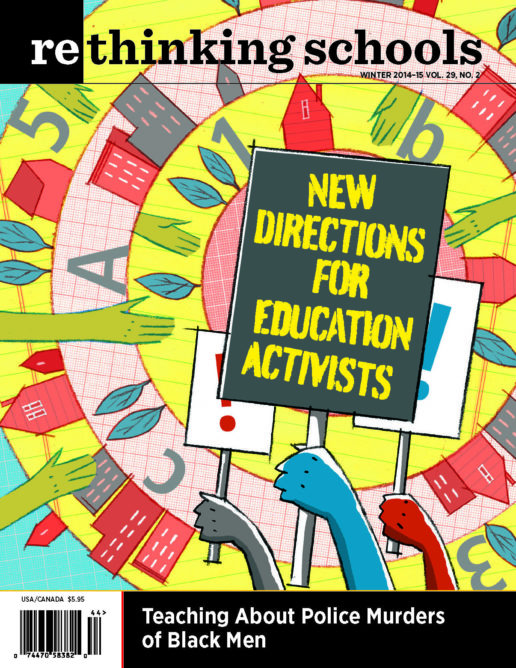Preview of Article:
Strike!
Teaching labor history in a right-to-work state
When I graduated from the University of Wisconsin-Madison in 2011, I was leaving the state at a momentous time in its history. For months, thousands of people had been demonstrating at the state capitol in daily protest of Gov. Scott Walker’s proposed Budget Repair Bill. The bill included a provision that greatly restricted collective bargaining for most public sector unions. As a member of the teaching assistants’ association at the university, I was one of the demonstrators, tugging my laptop into the capitol every morning to finish work on my dissertation, taking breaks to chant, march, dance, listen to speakers, discuss unfolding events with fellow protesters, and strategize about how to make our diverse voices heard. Most days, I stayed until late into the evening when hundreds of people arrived to sleep in the hallways.
Those weeks were extraordinary for many reasons, but for a former history teacher they were especially charged. Wisconsin has a deep tradition of progressive politics and organized labor—its workers have historically been among the most unionized in the country. The Bay View Massacre happened in Milwaukee, the Kohler strikes were in Sheboygan, groundbreaking labor historian John R. Commons worked at the University of Wisconsin, and “Fighting Bob” LaFollette was governor and also represented Wisconsin in the U.S. Congress. In fact, LaFollette’s bust watched over the protesters from its perch in the rotunda, and students from a high school bearing his name walked out in protest.
The air was thick with the history of those who came before us and the memories of what was possible when working people organized. Despite the passage of what became known as Act 10, I left Wisconsin euphoric—high on the energy of people coming together, heady with the history of collectivism coming alive, and fired up about people’s attempts to defend workers’ rights.
And then I took a job in Virginia.
History Without Labor
As one of the first states to adopt “right-to-work” legislation in 1947 and to ban collective bargaining for public employees in 1972, Virginia has a very different kind of labor history from Wisconsin. Even in the 1930s, union membership never grew above 15 percent of the workforce as many white men worried that organized labor’s efforts to empower women and African Americans would threaten the traditions of “genteel” Southern womanhood and Jim Crow. In the 1940s, the Congress of Industrial Organizations (CIO) launched “Operation Dixie” throughout the South in an effort to reduce discrimination and increase union membership. In response, Southern segregationists threw their weight behind the Taft-Hartley Act, which banned closed union shops in interstate commerce. Gov. William M. Tuck had already signed Virginia’s right-to-work bill, crippling unions’ efforts to organize and desegregate the state.
So when I recounted my experiences in Wisconsin to my new students, pre-service elementary school teachers at George Mason University, the response was a collective “Huh?” The majority of them were native-born northern Virginians (primarily white women, like myself, from suburban communities); most had never given unions much thought. They had heard about the protests in Madison and were curious, but the logic of unionization made little sense. In a state with a history of restricting organized labor, their knowledge of what workers have fought for, and their imaginations about what they could or should fight for, were extremely limited.

